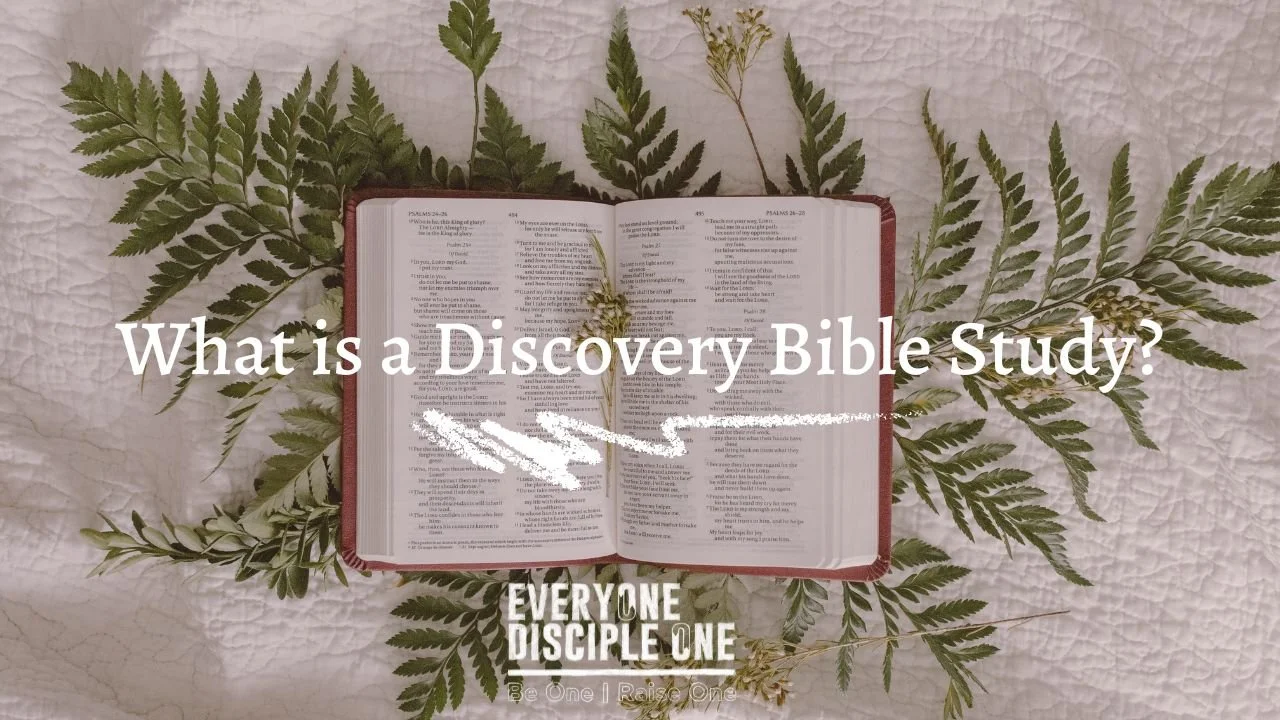Discovery Bible Study
Whether you are casually meeting with a couple friends, or leading a large Core Group, this tool will help you and your friends discover more of who God is through understanding the Bible.
The Discovery Bible Study method is unique.
There is no lesson to prepare, nor specific text questions. The outline given below is the only tool you need to facilitate a great discussion!
Below is a detailed explanation of the outline, followed by a skeleton outline that you can print off and put in your Bible.
The Discovery Bible Study is best done in a group of three or more.
The goal of the Discovery Bible Study is not to conduct a one-way Bible lesson, but instead to show people how they can learn from and make sense of Scripture and to introduce them to different Christian disciplines, such as worship, prayer, community, service, and accountability. This makes DBS great for seekers, international students, as well as mature believers. Because content is driven by questions and conversation, there is no limit to the depth of learning and application a group can experience.
Connect
The first portion of the DBS should be focused on your relationships with members of the group.
First, ask everyone to share two things: one thing they are thankful for and one thing that’s been difficult or stressful this week.
This creates a basis for worship and praise, and for leaning on one another as a community.
Optionally, ask the group how they have applied last week’s lesson and with whom they shared. This introduces accountability to the group.
Discover
Now turn to the passage for the week.
The passage could be as short as a few verses, or as long as a story that covers several chapters. It is important to make sure everyone has a Bible, so bring a few extra in case.
First, ask one student to read the passage aloud.
Next, have another student read the passage aloud while the other students listen with Bibles closed.
Last, have another student retell the story in their own words.
After the retelling, ask the group if anyone has anything to add to the retelling, or if anyone saw something different in the passage.
Discuss
Next, guide discussion with four basic questions:
What does this passage tell us about God?
What does this passage tell us about people?
What does this passage tell us about the relationship between God and people?
What other questions do you have about the passage?
During discussion, keep the following ground rules in place:
Keep discussion to the passage. It is especially important to rein in students who have more Bible knowledge and may be prone to drawing connections with passages that are unfamiliar to others in the group.
Don’t teach, facilitate conversation through questions. If a person makes a questionable comment, rather than correcting, ask, “Can you show me where in the passage you see that?” Or ask, “What does everyone else think about that idea?” Allow the group to self-edit & the Holy Spirit to speak and reveal.
Keep to the time allotted and redirect tangents.
Apply
It is important to always end discussion with an application question.
Have each person in the group answer the following question: “If this passage is true, how should it change how you live this week?” Model a response of: “I will…”. This teaches the importance of obedience to God’s word.
By asking, “If this passage is true…”, you empower the person to obey even if they aren’t a Christian yet.
Finally, have people identify others they can share the passage with this next week. This teaches them the importance of sharing God’s word with other people, and can give them practice doing evangelism before they even become Christians!
Serve
In closing, return to the needs shared at the beginning of the study and discuss how as a group you can help one another as a group this week.
Prayer
Close the study with prayer. This should not always be done by the facilitator.











